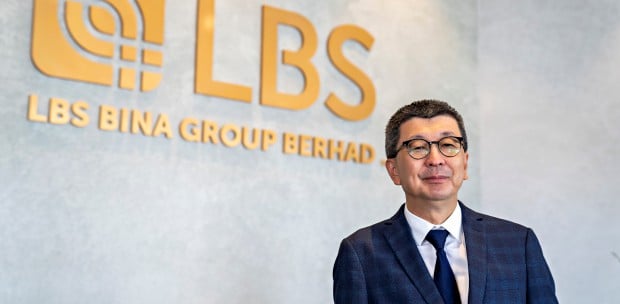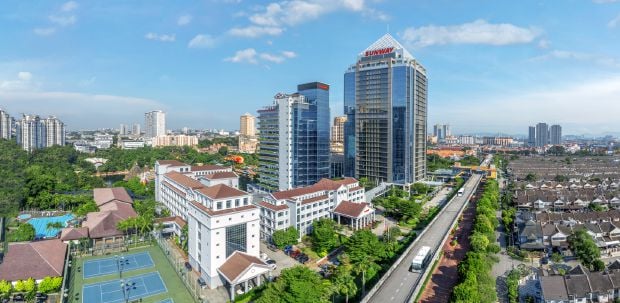CEMENT Industries of Malaysia Bhd's (CIMA) transformation plan is bearing fruit, with the company recording a higher revenue of RM1.52 billion in its financial year 2023 versus RM1.07 billion previously.
Net profit also surged to RM152 million from RM7.1 million a year ago, its best in the past decade. CIMA, a wholly-owned subsidiary of UEM Group Bhd, implemented two transformation programmes in the past six years, being the TP20, (2018-2020) and Project Singa Biru (2021-2023).
The TP20 programme focused on maximising plant reliability, improving cost structure and profitability, and providing a conducive working environment. With Project Singa Biru, CIMA aimed to be the "Best in Class by 2023".
It focused on five key pillars, namely strengthening market position, improving customer fulfilment, enhancing long-term sustainability, transforming ready-mix concrete and developing a highperformance culture.
The successful implementation of these transformation plans resulted in CIMA's stellar performance last year.
In line with Project Singa Biru and CIMA's continuous commitment towards innovation, the company initiated the Digital Transformation and Smart Factory programme that aims to revolutionise its operations through the integration of automation and digitalisation.
This is to ensure efficiency and sustainability as well as set new standards in the cement industry.
UEM Group managing director and CIMA board member Datuk Mohd Izani Ghani said CIMA, under the leadership of chairman Datuk Zaiviji Ismail and managing director Sharuddin Omar Hashim, had intensified efforts to future-proof the company by integrating innovation and sustainability into the core of its business strategies.
"The implementation of the transformation plan has elevated CIMA's market presence, enhanced its operational proficiencies, and steered the company towards a phase of newfound financial stability.
"After enduring a challenging four-year period marked by financial setbacks, CIMA achieved a remarkable turnaround in 2022, which set the stage for an even more impressive performance last year.
"This journey from recovery to the best performance in a decade showcases the tenacity, resilience and strategic acumen that define CIMA, positioning it for sustainable growth and long-term success," he added.
With a history dating back to 1972, CIMA has emerged as the second-largest cement producer in Malaysia, boasting two integrated plants in Bukit Ketri, Perlis and Bahau, Negri Sembilan, with a combined production capacity of 7.2 million tonnes annually.
Of the total, 4.6 million capacity is at CIMA's Bahau plant and the remaining at the Bukit Ketri plant. The company has a total of 982 employees and six types of products, of which 10 per cent are exported to Singapore.
CIMA's ready-mix division and whollyowned subsidiary Unipati Concrete Sdn Bhd (UPC) had in January launched its fifth batching plant in Sendayan, Negri Sembilan.
With this fifth facility, UPC's annual concrete production capacity now stands at 933,000 m3. UPC 's four other batching plants are in Sungai Besi, Nilai, Labu and Pulau Meranti.
It plans to open five more batching plants in Klang Valley, Johor and Penang by the end of the year to support various developments and construction projects in the targeted states.
CIMA's unwavering dedication to sustainability began more than a decade ago when it installed the country 's first alternative fuel combustion system, adopted from Japanese technology, at its Bahau plant.
It has continued its dedication to this day with an increased use of alternative fuel to replace fossil fuel.
CIMA's Bukit Ketri plant head Ezni Husni explained that the company had been increasingly using alternative fuels in their production to support a circular economy.
"Our alternative fuel adoption at the Bukit Ketri plant currently stands at over 50 per cent, ensuring our operation is more sustainable and eco-friendly."
He said CIMA's turnaround in the last two years could be attributed to the strategic implementation of the transformation plans that revolved around operational efficiency, plant reliability and efficient cost management.
"At Bukit Ketri plant, we improved the plant reliability as evidenced from the 20 per cent increase in plant running days in 2023 compared to 2018.
A more effi cient operational structure allowed us to maximise our production capacity to meet the growing dem a n d ," he said.
"Looking ahead, we are not only focusing our efforts to ramp up our production capacity but at the same time, ensuring our operation is more sustainable by equipping innovative and green technology across different stages of production," added Ezni. Bahau plant head Mohd Padely Mohd Paman said CIMA's transformation plans such as TP20 and Project Singa Biru emphasised maximising operational reliability, improving cost structures, enhancing customer satisfaction and fostering a culture of innovation.
"One particular aspect is with regards to coal management, where we have a more flexible coal grinding process that allows us to utilise the coal and its alternative as well as increased usage of alternative fuel in our production ."
He noted in recent years, CIMA had faced operational challenges such as cost management due to higher coal price, asset limitation and unscheduled shutd owns.
"A focus on preventive maintenance, specialised training for key staff, and a centralised shutdown management function aim to reduce unexpected downtimes.
"Optimising production through de-bottlenecking, transparent cost management, a coal management system, and the adoption of alternative fuels address cost concerns and asset efficiency," he said.
The Bahau plant is in the process of developing Waste Heat Recovery (WHR) system to minimise energy consumption effectively.
"Once operational, it could help save up to 30 per cent of electricity consumption and reduce Scope 2 emission by 20 per cent. "By harnessing renewable energy sources and optimising energy utilisation, CIMA aims to reduce its carbon footprint and enhance operational sustainability," Padely added.






